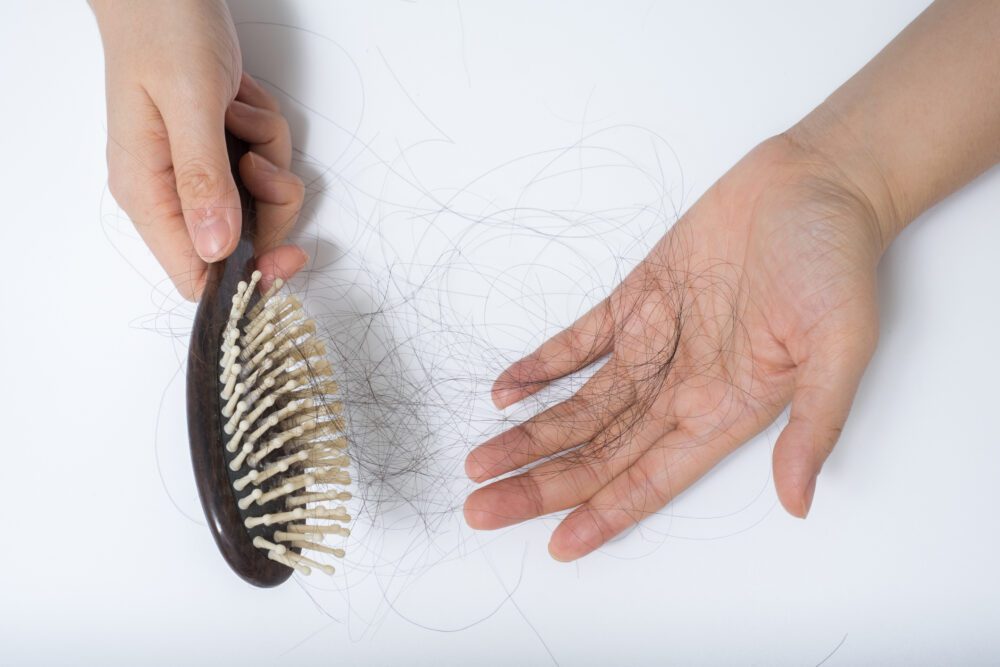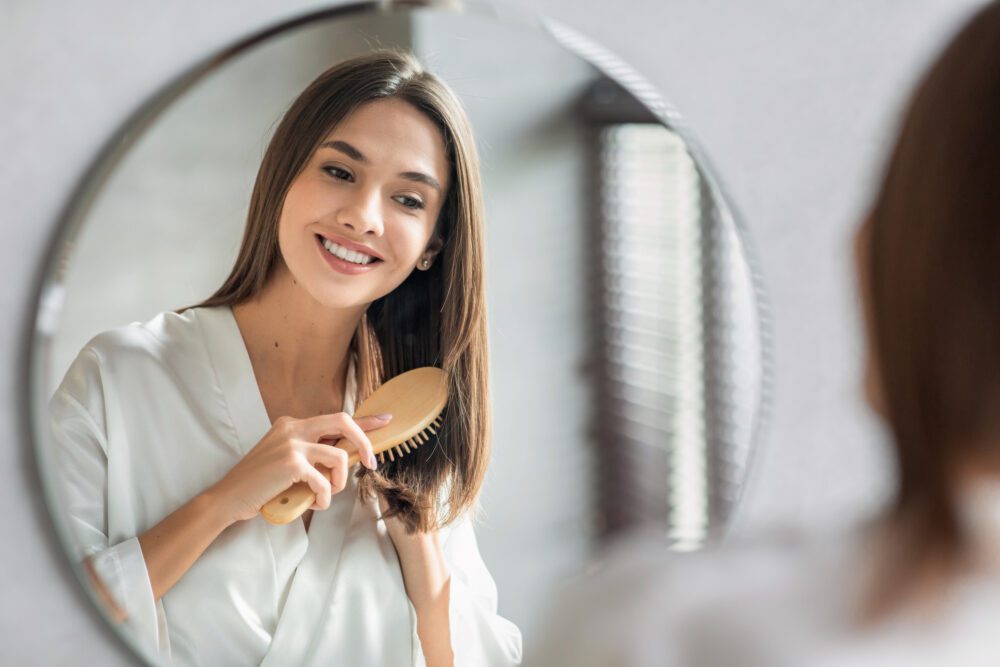The journey of motherhood is a beautiful and transformative experience, but it also comes with its fair share of physical changes. One such change that many new mothers face is postpartum hair loss. It can be a distressing and unexpected occurrence, but understanding the causes, timeline, and ways to manage postpartum hair loss can help new moms navigate this temporary phase with confidence and grace.

Postpartum hair loss, also known as telogen effluvium, is a common phenomenon that affects many women after giving birth. During pregnancy, hormonal changes cause an increase in the growth phase of the hair cycle, resulting in thicker and more lustrous hair. However, after childbirth, hormone levels normalize, and a significant number of hairs enter the shedding phase simultaneously, leading to noticeable hair loss.
The primary cause of postpartum hair loss is hormonal fluctuations. During pregnancy, elevated estrogen levels prolong the growth phase of the hair cycle, resulting in reduced hair shedding. However, after delivery, estrogen levels drop rapidly, causing the resting (telogen) hairs to shed. This shedding usually peaks around three to six months postpartum but can vary for each individual.

Coping Strategies for Postpartum Hair Loss :
- Be Patient and Embrace the Process: Remember that postpartum hair loss is temporary and a normal part of the hair cycle. Hair typically starts to regrow naturally within six to twelve months after childbirth.
- Maintain a Healthy Lifestyle: Opt for a balanced diet rich in vitamins, minerals, and proteins to support healthy hair growth. Stay hydrated, exercise regularly, and manage stress levels to promote overall well-being.
- Be Kind to Yourself: Remember that hair loss is a temporary phase, and self-acceptance is essential during this transformative time. Surround yourself with supportive loved ones who understand and uplift you.
Promoting Healthy Hair Regrowth:
While postpartum hair loss is a natural phase, there are steps you can take to support healthy hair regrowth:
- Nutrient-Rich Diet: Include foods rich in vitamins A, C, E, and B-complex, as well as iron, zinc, and omega-3 fatty acids to nourish the hair follicles from within.
- Supplements: Consult your healthcare provider about supplements specifically formulated to support hair health, such as biotin or postnatal vitamins.
- Scalp Care: SW1’s scalp treatment using The Revage 670 Laser machine
Revage 670 Laser is an FDA-cleared low-level laser therapy (LLLT) machine specifically designed for treating hair loss and promoting hair regrowth. It utilizes a special wavelength of laser light that penetrates the scalp to stimulate the hair follicles, improve blood circulation, and encourage the growth of thicker, healthier hair. - Scalp Serum: scalp serum stimulates hair follicles, awakening dormant ones and encouraging new hair growth.
Postpartum hair loss can be a challenging experience for new mothers, but it’s crucial to remember that it is a temporary phase in the hair growth cycle. By understanding the causes, adopting healthy lifestyle habits, and practicing gentle hair care, you can support the regrowth of healthy, vibrant hair. Embrace this journey of motherhood, and know that your hair will regain its fullness and luster in due time.


